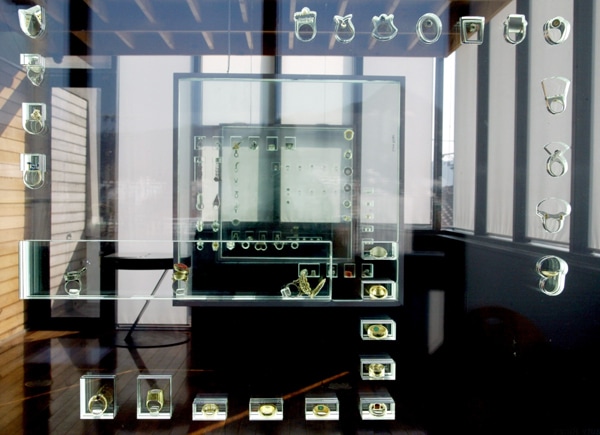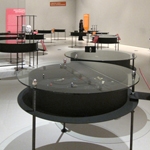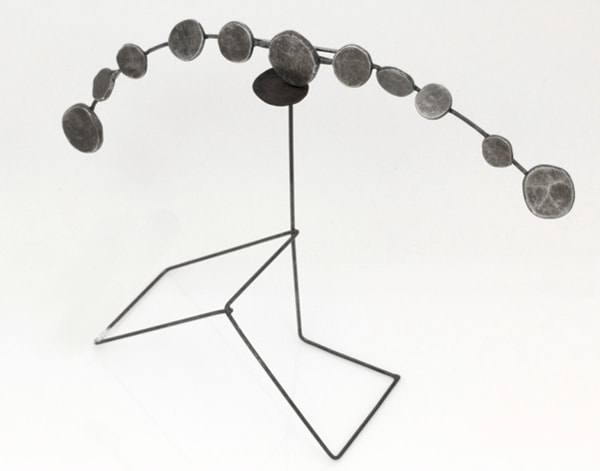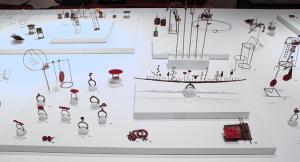 Given the recent political juggernaut in the USA it is only fitting that we consider what is going on in another part of the world. This time it is Thailand. The AJF gallery ATTA is in Bangkok and Taweesak Molsawat is the artist who is questioning the politics of his country with a show called The Missing Elements of Democracy: Art Jewerly as a Political Critic. This is an excellent example of an exhibition that attempts to use jewelry to political and critical effect. See if you think it succeeds.
Given the recent political juggernaut in the USA it is only fitting that we consider what is going on in another part of the world. This time it is Thailand. The AJF gallery ATTA is in Bangkok and Taweesak Molsawat is the artist who is questioning the politics of his country with a show called The Missing Elements of Democracy: Art Jewerly as a Political Critic. This is an excellent example of an exhibition that attempts to use jewelry to political and critical effect. See if you think it succeeds.
Susan Cummins: Taweesak, would you describe some of the missing elements of democracy in Thailand?
Taweesak Molsawat: The word democracy originates from the Greek δημοκρατία (dēmokratía) or ‘rule of the people.’ This is the direct democracy system. The core concept of modern democracy is ‘government of the people, by the people, for the people, shall not perish from the earth’—this is indirect democracy. This concept has not worked as it is supposed to in today’s political system in Thailand. There are many significant factors that cause problems, but this body of work focuses on two elements: the politicians and the people (citizens of Thailand). These two elements—the real representation of the people and an understanding of the true concept of a democratic electoral system—have been missing in Thai government. The politicians are not representatives of the people, and democracy is not just a vote for personal gain.
You say in your artist’s statement: ‘In this body of work, I am particularly interested in exploring jewelry and the body of the wearer as a way of communicating a political message.’ Why did you settle on jewelry as a form of communication in this way? What are its strengths as an art form?
Taweesak Molsawat: Art communicates through visual and non-visual means. The subject matters of art originate from culture and society, therefore art is an instrument to critically and creatively examine culture and society.
In today’s commodity society, one is constantly moving. The way one dresses is the way one expresses oneself. Therefore, and unavoidably, one’s body has become a moveable channel for cultural communication. One cannot change the politicians and the political system, but one can influence the individual and people around them at intimate levels. One can communicate and educate people about the missing elements in democracy. Jewelry is an effective art form for direct and emotional communication to the public on a deeper personal level than other media. Jewelry can communicate to one person at a time, saying a lot without speaking.
 Susan Cummins: Taweesak, would you describe some of the missing elements of democracy in Thailand?
Susan Cummins: Taweesak, would you describe some of the missing elements of democracy in Thailand?
Taweesak Molsawat: The word democracy originates from the Greek δημοκρατία (dēmokratía) or ‘rule of the people.’ This is the direct democracy system. The core concept of modern democracy is ‘government of the people, by the people, for the people, shall not perish from the earth’—this is indirect democracy. This concept has not worked as it is supposed to in today’s political system in Thailand. There are many significant factors that cause problems, but this body of work focuses on two elements: the politicians and the people (citizens of Thailand). These two elements—the real representation of the people and an understanding of the true concept of a democratic electoral system—have been missing in Thai government. The politicians are not representatives of the people, and democracy is not just a vote for personal gain.
You say in your artist’s statement: ‘In this body of work, I am particularly interested in exploring jewelry and the body of the wearer as a way of communicating a political message.’ Why did you settle on jewelry as a form of communication in this way? What are its strengths as an art form?
Taweesak Molsawat: Art communicates through visual and non-visual means. The subject matters of art originate from culture and society, therefore art is an instrument to critically and creatively examine culture and society.
In today’s commodity society, one is constantly moving. The way one dresses is the way one expresses oneself. Therefore, and unavoidably, one’s body has become a moveable channel for cultural communication. One cannot change the politicians and the political system, but one can influence the individual and people around them at intimate levels. One can communicate and educate people about the missing elements in democracy. Jewelry is an effective art form for direct and emotional communication to the public on a deeper personal level than other media. Jewelry can communicate to one person at a time, saying a lot without speaking.
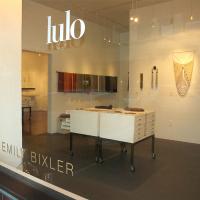 Gallery Lulo in Healdsburg, California, is a collaborative effort between artist Karen Gilbert and Anne-Katherine Schjerbeck. Their gallery has grown in the past three years, and recently they opened an additional space. This month’s show Re:Work Sculpture and Accessory is the first one in the new space and features the dexterous artist Emily Bixler. It has been interesting to observe the blurring of the lines between disciplines in contemporary jewelry, and this show is an excellent example of it.
Gallery Lulo in Healdsburg, California, is a collaborative effort between artist Karen Gilbert and Anne-Katherine Schjerbeck. Their gallery has grown in the past three years, and recently they opened an additional space. This month’s show Re:Work Sculpture and Accessory is the first one in the new space and features the dexterous artist Emily Bixler. It has been interesting to observe the blurring of the lines between disciplines in contemporary jewelry, and this show is an excellent example of it.
